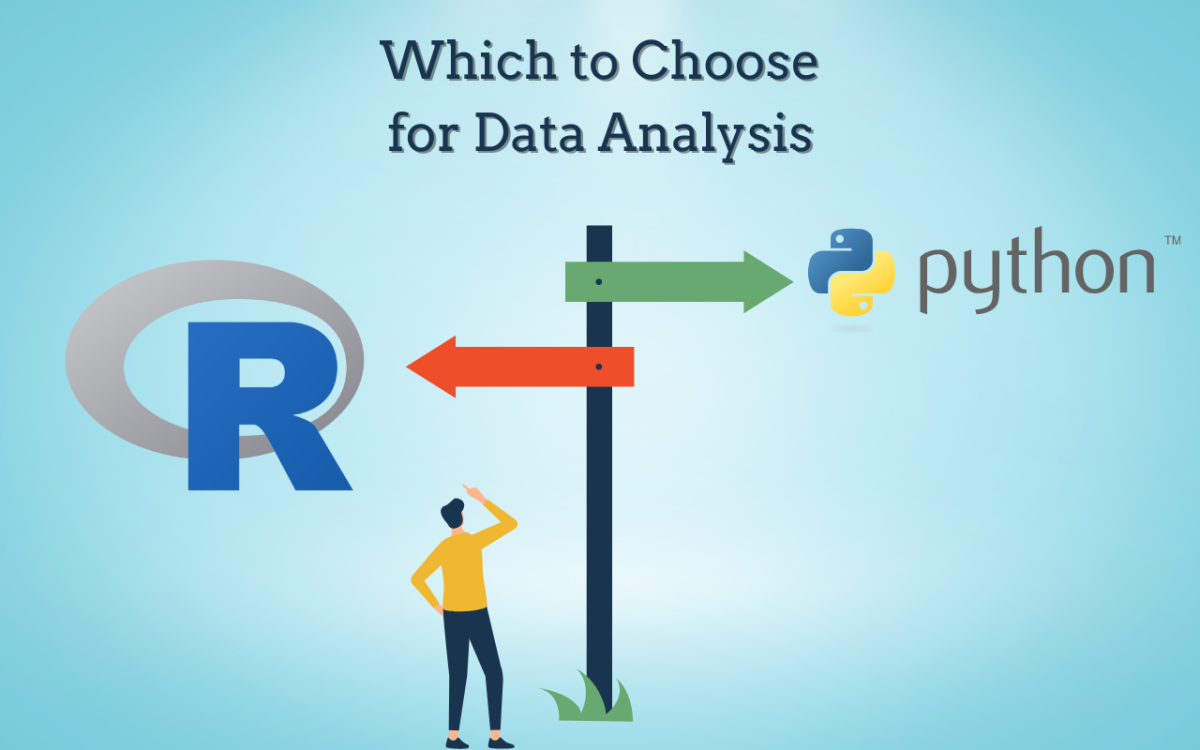Image made in Canva by Author The process of data analysis can be thought of as being divided into three main stages: Data preparation involves cleaning up your dataset to make it easier for you or others to work with. The second step involves exploring your dataset visually; this is crucial because it enables you to see patterns in the data that wouldn’t be obvious just by looking at lists of numbers. Finally, formal modeling allows you to extend these preliminary findings into more general conclusions about how processes work in practice and then apply them back to new datasets.
Why Choose Python for Data Analysis?
Python is a high-level, general-purpose dynamic programming language that has recently gained popularity as a data science tool. Python is also an extension language to control high-level applications like MATLAB and Maya, and it’s been applied in areas other than science and engineering (including web development).Python can be implemented on many different platforms but is most commonly run using the CPython interpreter. The language was designed to emphasize code readability and a syntax that makes it easy to express yourself without worrying too much about silly details like type declarations or memory management issues. This made it suitable as an introductory language for people new to programming and experienced programmers from various languages such as Java or C++ if they want something more straightforward yet powerful enough for their needs.
Large Community
This is because the language has been around for a long time. That means many developers and users have built tools that help you do data analysis. For example, when you need to visualize your results or produce reports with Python, you’ll find many packages available to help get the job done quickly. In addition, Python is widely used in academia, which means many resources are available to learn the language.
Easy to Learn
Python is a simple language. As a result, Python has been used in many fields, including finance, science, education, and web development. It’s also a language that you can read and write in less than an hour! Python is easy to read and write because of its indentation rules: if you want to start a new block of code (a function), then indent your code by four spaces; if you’re going to end the block of code, then don’t indent any more. This makes maintenance more manageable because you can quickly see where code blocks begin/end without overthinking it.
Interpreted Language
There are a few things that make Python an ideal language for data analysis. One of these is it’s an interpreted nature, which means it can be run directly from the source code without being compiled into machine language. This makes it easier to use since there’s no need to wait for a program to compile before running it. Python is also object-oriented (OO), meaning that you can define objects based on classes and then instantiate them as needed by calling their constructor functions or methods. Classes provide:
Structure and organization for your program Organizing related elements together Making them easier to find and manage later
This multi-paradigm programming language allows programmers to choose between different styles depending on what works best in any given situation: functional programming (FP), imperative programming (IP), structured programming (SP), and object-oriented programming (OOP).
Toolkit for Data Analysis
Python has a rich collection of libraries for data analysis, machine learning, and visualization. Some of the popular libraries are:
Numpy: It is a library used for scientific computing and engineering. It provides a high-performance multidimensional array object and tools for working with these arrays. Pandas: It is a library designed to make data analysis easier. It offers DataFrame objects, which are fast and memory-efficient implementations of R’s data frames. Matplotlib: It is the venerable 2-D plotting library for Python that lets you create publication quality figures in a variety of formats. Scikit-learn: It is a python module for machine learning and data mining. It is built on top of SciPy.
Why Choose R for Data Analysis?
R programming is an open-source language, and it is used for statistical computing, graphics, and data visualization. R can be installed on all major operating systems, including Windows and macOS. It can be used to run high-performance applications that approach the speed of C code but with much more ease of use because of its extensive library routines. R is a good tool for data manipulation, analysis, and visualization. It is a powerful language that makes it easy to learn and use. The R language is open-source; hence, the source code can be downloaded from the internet, or you can create a file by typing your program in a text editor like Notepad++ or Sublime Text.
Large Community
R has a large and active community that can be accessed online. This means you can access information, support, and solutions whenever you need them. In addition, R has many packages available that can be downloaded to add particular functionality to your program or data analysis project. These packages are released by the community, who have made it easy for all of us to benefit from their hard work. These packages can be found in many places, including CRAN (Comprehensive R Archive Network), Bioconductor, and GitHub. It’s possible to create your packages and share them with the community, which can be a great way to contribute back.
Graphics
Graphics functions in R are used to create plots. The function plot() is the most basic graphics function and can be used to create a simple line graph. Other functions, such as histogram(), boxplot(), violinplot(), and many others, make it possible to visualize your data quickly. For example, if you have multiple data sets, it is easy to plot them together using the par() function. You can also easily add annotations like axis labels or legend items using annotate(). You can customize your graphs with different colors, shapes, or sizes of points/lines/bars by specifying an aesthetic mapping that maps values from one variable onto another variable.
Python or R: Which Should You Choose?
R and Python are popular programming languages for data analysis, but only one is suitable for your project. Python is a general-purpose programming language from web developers to machine learning experts. On the other hand, R is specifically designed for statistical computing and graphics. Both these languages have their good points when it comes to data analysis. Python programming is a high-level language that includes dynamic typing (type information can be inferred at runtime). At the same time, R is typically considered low-level due to its static typing (type information must be declared before execution). This means that you may need less experience with Python to become more productive with it than you would if you were using R instead. However, if you already know how to program in another language like Java or C++, then learning how they work together shouldn’t be too hard either way.
Conclusion
In conclusion, the choice between R and Python is difficult because they are both powerful and popular languages. However, it depends on which programming language you prefer and what kind of job you’re looking for. I personally use Python for my day-to-day projects. Therefore, I hope this article helps you choose the correct language for your data analysis projects.
This content is accurate and true to the best of the author’s knowledge and is not meant to substitute for formal and individualized advice from a qualified professional.
© 2022 Hassan

